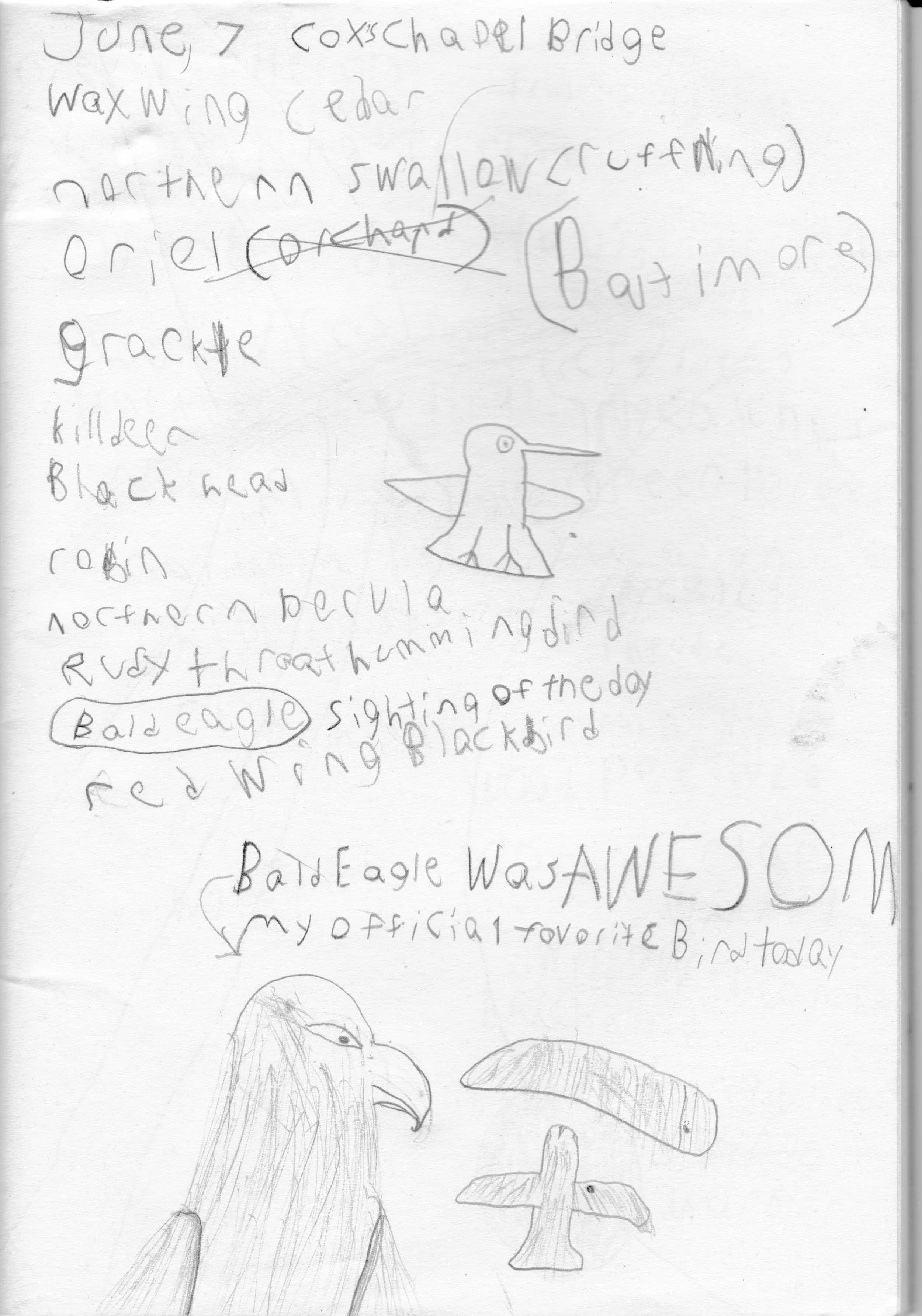I have been inspired to change! I was fortunate enough to attend a wonderful lecture and demo by Lara Gastinger on botanical illustrations and journaling that left me in awe and challenged me to do a better job. We encourage it with students in our camps and programs but I myself am not practicing what I preach. With this newfound inspiration, I hope to do a better. Loaded up with micron pens and sketchbooks, I no longer have an excuse. Now I just have to use it.
Journaling by definition is a record of experiences, ideas, or reflections kept regularly. It can be different things to different people. As a naturalist it is something I feel obligated to do. And each of us probably starts out with the intention of keeping one. I always have a little notebook and mechanical pencil in my pack but I rarely take the time to pull it out and draw or write in it.
So what should go in the journal? Well obviously, certain information is important as a naturalist. There are your observations that include the date, location, weather and such. Then there are observations specific to the flora or fauna you are observing. And then there may be intentional curiosities...my favorite part…”I notice…”, “I wonder…”, “It reminds me of…”, “What has changed since last time?”, “What am I missing here?”, and “What can I explore further?”. When drawing, one might include levels of scale. Focus can be on its habit, close-ups or the landscape. (credit to Lara Gastinger and her slides)
I stated earlier that I did not do a good job at keeping a journal but that is not exactly true. I do keep a journal. For four years now. It is my fishing journal. I’ve never missed an entry. It is simple really. I record the date, where I went, who I went with (if anyone), what the weather was like, what the day was like, the fish I caught and their sizes (if any), the flies I used, and the joy I felt that day. When looking back in this journal, it brings back all the joy from those experiences. Journaling is not just a record of what you did and where you did it, but how it made you feel. And in the future when you look back through the pages, you may discover something new and rediscover something from the past.
Ultimately what it all comes down to, is what you take out of that trip into the forest; along the stream; down the trail; or across the water. What did you see, hear, or feel and when. You do not have to be eloquent. You do not have to know how to draw. It is all about your personal reflections or thoughts and rendering that information on paper. It is a place for exploration.









